Using science fiction poems (or speculative poems) in the classroom can be a great way for students to build a deeper understanding of the genre. Students often have a very narrow understanding of science fiction (limiting it to perhaps one or two television shows or movies), and we can help them extend this. Additionally, this particular genre will show students that poetry isn’t some dusty art form relegated to Shakespeare or Byron.
This post includes Amazon Affiliate links.
Any revenue that Amazon shares with me will be used for the upkeep of this site. 🙂
Here are some science fiction poems I love using in my secondary ELA class.
1. “Six Haiku” by Karen Anderson
The white vapor trail
Scrawls slowly on the sky
Without any squeak.
I love Haiku for their brevity, and Karen Anderson’s “Six Haiku” is very brief. I like to share these with students because it truly is a mind-bending experience for them after learning that Haiku began as nature poems. Now, with this model in mind, students can write their own Haiku in a brand new genre! This is also a great moment for some integration of something tonally memoir – Anderson’s poems begin with a seemingly real observation, and students can begin their Haiku stories with an observation as well.
2. “Advice to a Six-Year-Old” by Mary Soon Lee
If you do spot a monster,
either it will be friendly,
or it will not.
The goal of this science fiction poem is pretty obvious from the title, and it’s a fantastic mentor text for students as they write their own “advice” poems. Students also like the sense of humor in this poem. I’ve found that humor is such a solid way to engage students in poetry; it makes them forget their preconceived notions that poetry is “hard”.
3. “The Quiet World” by Jeffrey McDaniel
In an effort to get people to look
into each other’s eyes more,
and also to appease the mutes,
the government has decided
to allot each person exactly one hundred
and sixty-seven words, per day.
So, a YA dystopian called Vox by Christina Dalcher came out in the spring of 2018 with this same notion – that the government would control speech, thought, and dissent by limiting the number of words citizens could speak. This is truly a fascinating idea and one that students have a LOT of thoughts about!
When you present this science fiction poem, you’ll definitely have students rebel and say that they’d be content with a few tweets’ worth of words per day… but with a little digging, they could understand how quickly that would become a problem. In “The Quiet World,” McDaniel approaches the word limit from a different angle, but the limit of self-expression remains the same. This is a definite discussion starter!
Need other poetry resources? Here are some for found poetry, poetry bell ringers, poetry speed-dating, poetry escape rooms, & contemporary poems by Black authors.
4. “Enthusiasts of Ruin” by Margaret Whack
When you imagine the world burst to pieces
all glittering and technicolor, screams like chimes
or hosannas, fire and flood, your body turns
toward it humming like a dowsing fork
to rain.
When I present this science fiction poem, I give students just this first stanza to consider at first. We discuss the ways in which destruction can be beautiful. Destruction and decay turn our eyes in a very specific way, and Whack imagines that the end of the world would be the same. Then, her imagery falls more in line with The Walking Dead and she begins to describe the horrors of a post-apocalyptic existence. You could withhold her continuation and have students write their own stanzas, or you could use this opening stanza as a discussion starter. Either way, this science fiction poem is a sure hit!
5. “The Migration of Darkness” by Peter Payack
Each evening, shortly after sunset,
darkness covers the land.
This poem imagines darkness as a sentient thing, making very human choices. This is a science fiction poem rooted in physics and chemistry, but also deeply imaginative. This is a great text to model a “zoom” of a thing. When I’m teaching poetry, I love having students choose one thing (a pencil, a coffee mug, or a peel of laughter) and “zoom” in on its existence. Where does it begin and end? Why does it exist? This science-fiction poem does just that.
Need something else? You can find ALL my recommendation lists for inclusive classroom materials here. Novels, TED talks, short stories, and so much more!
6. “Space Oddity” by David Bowie
This is Ground Control to Major Tom, you’ve really made the grade
And the papers want to know whose shirts you wear
Now it’s time to leave the capsule if you dare
This song is a great way to integrate some music into your classroom, AND it’s a narrative song in an under-utilized genre. It’s definitely a win-win! Students are really interested in the slow build of this song. This song taps into a very modern fear of being lost in space but also answers some fears of a specific historical context. Moreover, you could discuss this song as a metaphor. Science fiction is famous for taking general human fears and concerns and mapping them onto specific speculative events, but we can always map them back. How does the fear of “being lost” connect to other works of literature? What could “Ground Control” symbolize?


The Rhysling Anthology is a compilation of
science fiction, fantasy, and horror poems nominated
for the Science Fiction Poetry Association’s annual Rhysling Award.
This anthology is a great addition to your classroom library.
7. “The Last Crone on the Moon” by CSE Cooney
“Just once,” she says, “I want to
see my shadow cast by earthlight.”
Multivocality is such a cool aspect of poetry, and CSE Cooney nails it in this poem. Her poem recounts someone vaguely witchy (evoked by the word “crone” in the title) who grows old on the moon. This is such a fascinating blend of atmospheres (something more fantastic with the gleam and glam of science fiction) and ideas. This is a great science fiction poem to share with students to encourage them to blend genres in their own writing.
Other ways to incorporate poetry in any ELA unit
Looking for another way to incorporate or even introduce poetry to your students?
If you are reading a whole-class novel or independent reading of any genre, you can use Found Poetry to engage your students in a fun, no-pressure approach to poetry.
Found Poetry asks students to reshape a text into something new – a poem! I always ask students to engage with the text first, pulling out words and phrases that are evocative to them. Then, they go through and find a theme that emerges from what they’ve chosen, using some or all of what they’ve found on a first run.
I take students through this process using my Found Poetry Packet, available on TeachersPayTeachers. I use model texts and poems from either fiction or non-fiction, depending on my goals for the unit. Students can also practice “finding” their own poems on these texts, before pushing their creativity to the next level with the target text.
“Found” poetry is a great teaching tool because the possibilities are endless. I have used this will many levels of students on several kinds of texts. I know you’ll have a great time working on this with your students!
What are your favorite science fiction poems to teach in Secondary ELA? Let me know in the comments. 🙂
Happy teaching!

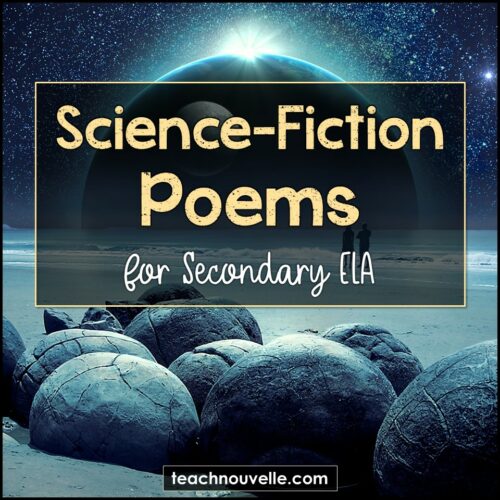
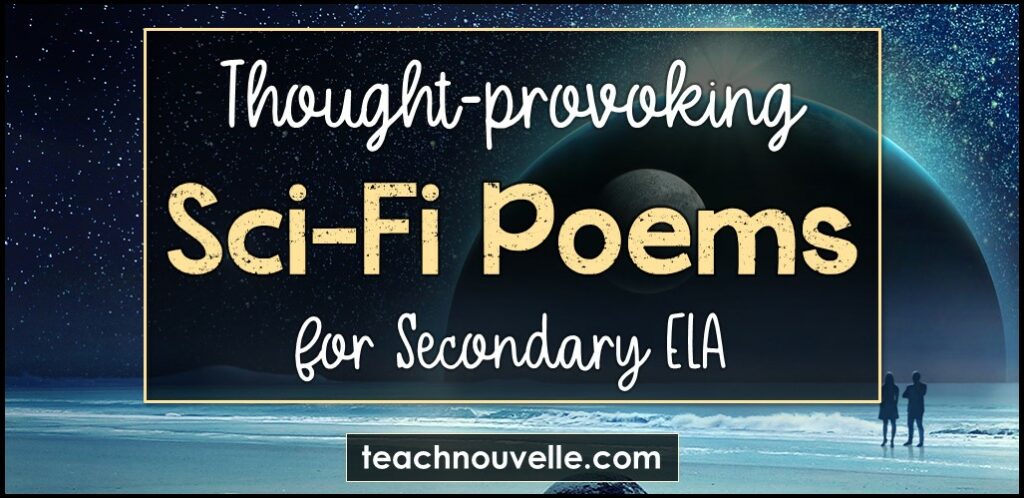


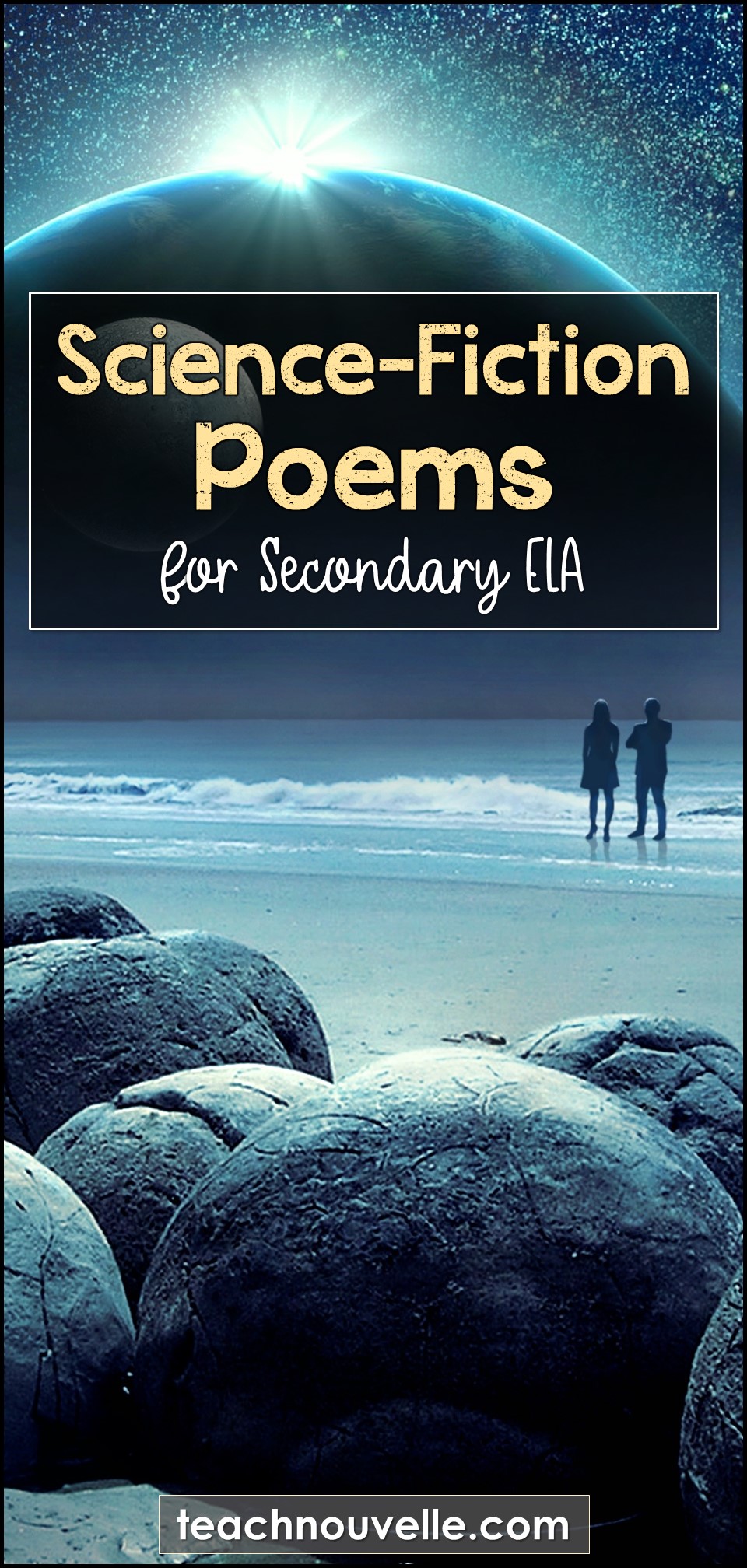
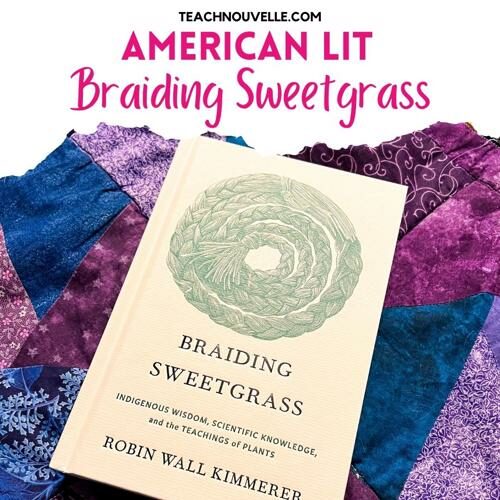
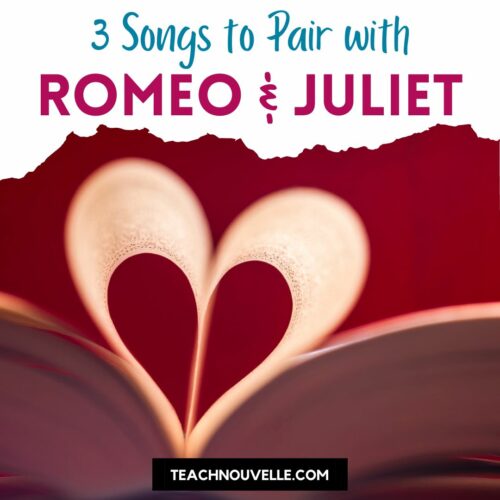
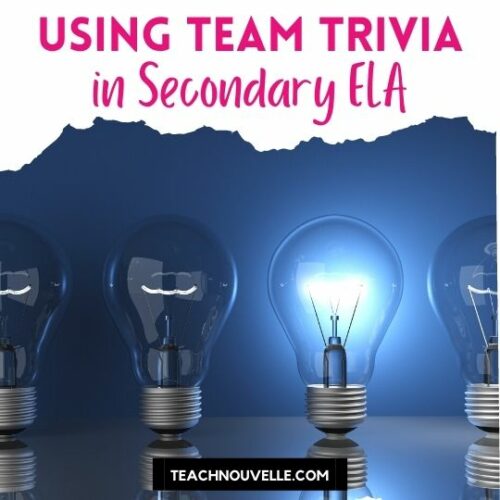
2 Comments
Rick Badman
September 30, 2020 at 4:22 pmThe Quiet World by Jeffrey McDaniel is my all time favorite.
Lisa Williams
February 3, 2023 at 11:41 amDanielle, I appreciate your willingness to share resources. I can’t tell how often I have been looking for just the right thing to add to a unit, and my google search leads me to you! Thank you! I am convinced we would have a blast if we were planning lessons on the same team somewhere!